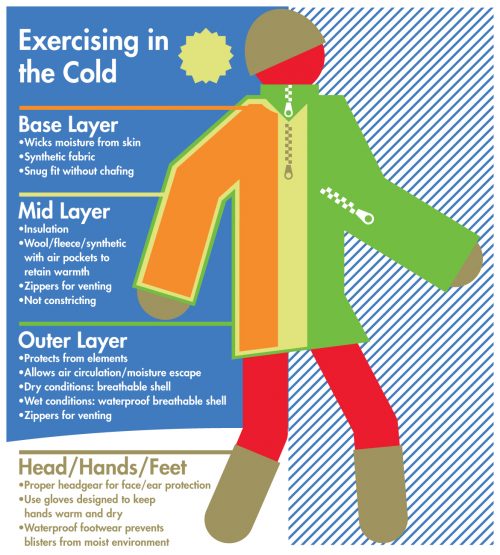They provide enough insulation to keep you warm, and due to their breathable fill and sleeveless fit, they also prevent you from overheating while you're in motion. Darker colours absorb more heat, so you'll keep cooler when you're not in the water. Do vest keep you warm?
How Do Heated Vest Work at Donald Hammond blog
Absolutely, vests made of downfill can provide sufficient insulation and warmth during winter to keep your body warm.
Vests usually provide warmth to the core of the body which is the chest and back.
However, the vest does not provide super warmth during harsh cold weather. Vests are a wonderful way to keep your body warm on those winter or cold days. The main ways a vest will keep you warm is by: Keeping your core body warm it is an added garment you can wear under a jacket (if you choose to) a vest is lighter than a jacket but still warm a vest can be insulated a vest can be water proof (stopping the rain or
The shell's fabric repels wind and moisture as well, and even when the vest gets wet, the synthetic insulation will still keep you warm. On a windy day part of what your jacket does is prevent the wind from taking your warmth away, so even the warmest vest won't keep you warm. On a still day, maybe. Your blood moves heat around your body.
:max_bytes(150000):strip_icc()/lightweight-heated-vest-with-battery-pack-AMZN-VEST0921-f961e06007c64158a9d3e20b3bee46d6.jpg)
When it's very cold you automatically reduce blood flow to the extremities to conserve heat in your core.
A vest prevents heat loss at your core. Ever wondered, 'do vests keep you warm in the biting cold?' if you've braved the winter chill with a traditional vest, you might have found yourself asking this question more often than not. The answer has often been disappointing, until now. In other words, both our heated vests and heated jackets function with the same objective:
To use these three components to keep your core warm. If you're searching for the best heated vests or jackets, know that both of our products have adjustable heating levels, reliable battery life, trusted reviews, and Heated vests have become increasingly popular in recent years, offering a convenient way to stay warm in cold weather. However, many people wonder about the safety of these garments.

In this comprehensive guide, we will delve into the pros and cons of heated vests, exploring their technology, examining potential risks, and addressing common
Some motorcycle jackets keep you warm on the road, while others are styled for hiking and camping. Do heated vests really work? Yes, a heated vest works well and is similar to heated jackets. There are heated zones on the front and back that have coils that heat your core regions.
A heated vest also has the advantage of leaving you free to A heated vest will keep you warm for about 10 hours on the lowest setting, but that changes dramatically when it is on a medium or high setting. While others will last for about six hours, some vests will drain the battery after three hours. When you pick a vest, have where you'd like to wear it in mind.

If you are wearing the vest for skiing
Puffer vest outfits are great for winter, especially with athletic outfits! Can a vest keep you warm in winter? Vests provide more warmth than most people realize, and even help keep your extremities warm. Should a puffer vest be tight or loose?
How should a puffer vest fit? A gilet should ideally fit a man in the same way as a waistcoat does. Find the right rash vest for you. Whether you're a casual paddleboarder or a hardcore surfer, we have the perfect rash vest for you, guaranteed to keep you warm all year round.

Our range caters to men, women and children.
If you are looking for extra warmth, rash prevention or sun protection, our rash guards are bound to meet your needs. Heated vests and heated jackets are exceptional at keeping you warm in the fall and winter. Explore what to look for when shopping for a heated vest. A string vest helps keep a person warm by trapping a layer of air close to the body.
This layer of air acts as insulation and helps to retain body heat, despite the presence of holes in the vest If you're wearing like a heavy sweater often a vest is much more comfortable to wear than a jacket over it. Sometimes your arms get a little chilly but it keeps your core warm. Also, the weather may have been milder for people used to the cold as opposed to you who is acclimated to warm florida weather.

To me vests are one of those items that work well if you're really putting in big days and essentially collapsing at camp.
They're nice for quick breaks when it isn't that cold, say down to freezing but much lighter than a fleece jacket or full down jacket. Whether rash vests keep you warm seems to be up for some debate, and it really depends on the type you wear and the conditions you're in. 'rash vests don't keep you warm in the same way as a These rash vests can keep you warm and a generally good for water temperatures that are too hot for a full wetsuit but too cold to just wear boardshorts.
As you can see, a rash guard is a handy piece of clothing for a surfer, diver, or snorkeler. The exception to this is neoprene thermal rash guards which do keep you warm under your wetsuit. Rash vests are a great options for protecting you from the harmful uv rays of the sun but when it comes to the cold water do rash vests actually keep you warm or what do you need to wear if you want to stay warm in the water? Rash vests don't keep you warm and should never be the sole source of heat retention.

The shell's fabric repels wind and moisture as well, and even when the vest gets wet, the synthetic insulation will still keep you warm.
Rash guards do offer a little extra warmth providing you with an extra layer but their purpose is not to keep you warm. They will offer a wind barrier and prevent bouts of cold water hitting your skin. If you want to stay warm then you will want a wetsuit. During winter, you need to wear a sweater to stay warm.
But when i asked how a sweater works, people told me that sweaters have air pockets that keep you warm. Since air is an insulator, these air pockets keep you warm. But aren't you already surrounded by an atmosphere in the first place? Why do you specially need a sweater for that?

In fact, you should not be expecting a rash guard to keep you warm in temperate or cold waters at all;
They are best suited for warm water use or to be worn underneath a wetsuit as a base layer. As long as you're safe and still able to do what you Depending on how much coverage and sun protection you want, hooded rash vests are available for additional wind and sun protection. Consider a light colour if you need one for very warm, sunny or tropical weather.


